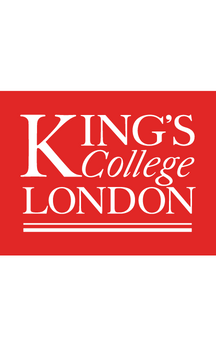
The cryptocurrency market continues to garner significant attention, attracting investors and innovators with its promise of revolutionary financial solutions. However, for many people, this burgeoning industry is also plagued by a lack of transparency which undermines its credibility and trustworthiness.
To explore the role of transparency in shaping the future of the crypto market, we sat down for an interview with two esteemed experts: Valentina Drofa, Co-Founder and CEO of Drofá Comms, an international PR consultancy specialising in financial and fintech sectors, and Su Carpenter, Executive Director of CryptoUK, the self-regulatory trade association for the UK’s digital assets industry.
In our discussion, we delve into why transparency is crucial in the crypto market, how it shapes the industry’s image, and the strategies that can be employed to enhance understanding and trust among investors and the general public.
Valentina, as a PR specialist, what role do you believe transparency plays in shaping public perception of a crypto company?
Valentina: To my mind, transparency is the cornerstone of building and maintaining a positive public perception for any company and this is doubly true for financial services businesses. Dealing with client’s money and investors means that clarity of intent is paramount if you want to hold their trust.
Users and investors require a clear understanding of who owns the company, how it is regulated, where the money is stored, and other key details about operations and decision-making processes. This knowledge provides reassurance to people that they are dealing with a business that can handle their funds responsibly.
Maintaining open communication about the company’s financial health and project developments helps establish and maintain credibility and integrity, which can significantly enhance its standing among its target audience. And given that the crypto industry is often marred by skepticism, transparency is precisely what companies here need to differentiate themselves from less scrupulous actors.
Unlike traditional financial markets, which have had centuries to develop robust regulatory frameworks and oversight mechanisms, the crypto market is still very young. This makes it a fertile ground for scams and dubious projects. By ensuring that stakeholders have access to accurate and timely information, many of these risks can be mitigated, thus fostering trust and confidence in the market.
Su, what do you think stands in the way of the crypto industry improving transparency on the global scale?
Su: The digital assets are inherently borderless and global and greater collaboration among governments and regulators is essential to effectively formulate regulations that enhance transparency and compliance among cross-border firms.
Take the Travel Rule regulation as an example: individual country regulators have interpreted this rule differently, which has resulted in complexities for companies striving to maintain compliance across various jurisdictions and regulatory frameworks. As a consequence of this, organisations often have to adopt the strictest standards in all their operations, which is time-consuming, complex, and costly.
This is especially challenging for smaller, agile startup organisations that lack the extensive compliance and operational teams of larger firms. This means that such startups face higher barriers to entry, hindering innovation and growth in the industry.
If improving the regulatory situation is challenging, then how about improving communications? Valentina, how would you say crypto companies can better relay the idea of transparency in their messages?
Valentina: Properly leveraging communication strategies can indeed play a pivotal role in improving a company’s transparency. Part of the reason why the crypto industry suffers from a lot of skepticism is because media outlets are often prone to highlighting negative events and the various so-called “shitcoins” that are often overhyped and don’t have much real value behind them.
It is understandable why they do so – hyped news generate more reader views, which is to the media’s benefit. But when information about dubious projects takes up the lion’s share of headlines, it can overshadow the legitimate projects and innovations taking place within the sector. The resulting atmosphere of doubt hinders industry growth, as serious players struggle to gain trust and credibility.
This problem is further exacerbated because companies themselves typically resort to the use of PR in two cases: to put out fires when something bad has already happened or when they want to “sell a hot topic”, such as the launch of a new product or entry into a new market. That is not enough – for PR to be effective, it has to be continuous. It cannot be something to just switch on and off.
At Drofa Comms, when we work with clients, we always suggest approaches that employ different communication channels. By making use of these channels to disseminate accurate and comprehensive information, both about themselves and the crypto market as a whole, crypto companies can keep the public better informed about key developments.
Furthermore, businesses can also leverage communication strategies to educate the general public about the complexities of the crypto market. Doing so positions the company in question as a thought leader and also helps make the market itself more accessible, contributing to the narrative of trust and reliability.
Based on our previous work with various clients, we can say with certainty that as soon as a company becomes a little more open to its audience, it starts operating on another level. It steps out of the grey zone of being “an unknown”, which helps it gain much greater prospects, both financially and reputationally.
Su, from your perspective, how can regulators team up with businesses to educate the audience? And is this really needed?
Su: Absolutely! At CryptoUK, we have been advocating for better education since our inception as a trade association seven years ago. This education should extend to governments, regulators, media, and consumers alike. Without an unbiased understanding of the opportunities and risks that the digital assets sector provides, people cannot make informed and balanced decisions about its future. This lack of understanding can stifle economic growth.
We firmly believe that the experience and knowledge within the businesses we represent can fully support regulators in providing education and awareness programs. For example, our recent Travel Rule Good Practice Guide is a collaborative effort that aims to educate and set standards.
Additionally, we work alongside several educational institutions and consumer protection agencies in the UK to further this goal. Through such partnerships, we can ensure that all stakeholders are well-informed, which is crucial for the healthy development of the sector.
Valentina, are there any particular strategies that you could suggest to companies that wish to better communicate their transparency?
Valentina: Here, I need to make a remark that the choice of a PR strategy must align with the business goals set by the company and top management. The methods and messages involved in the communication depend greatly on the purpose desired by the company leadership. For this reason, when we start working with a new client, we always seek to establish first and foremost what specific goals the founders and top brass set for themselves.
Generally speaking, a PR strategy can involve work across several directions. First, there is engaging with the media, covering news stories that highlight the company’s achievements, innovations, and industry contributions. This helps showcase the expertise and professionalism of the team. You can also use such opportunities to share insights into the company’s internal processes and disclose performance metrics, which would help a lot in terms of building trust with stakeholders.
Another big thing to account for in communications is to promote the company leadership. By making the top officials accessible to the audience through interviews, Q&A sessions, and public appearances on industry events, you can build up the image of their expertise and openness.
Finally, don’t forget to maintain your social media profiles. They can make for an excellent way to provide regular updates about the company’s activities, interact with your target audience and respond to whatever ongoing queries your clients may have.
The specific tools and approaches are determined not only by the company’s goals but also by its readiness to be more open with the public. Our experience shows that not all companies are prepared for this path, and for some, the journey of building transparency can be long and complex.
For our part, Drofa Comms assists in making this journey easier by providing tailored strategies and support that align with our client’s vision and operational capacity.
Lastly, Su, do you think reinforcing trust through crypto regulation can lead to attracting large and institutional players? What, in your opinion, can be done to bring a more mainstream audience to this market?
Su: Yes, and we can already see the evidence of this. Institutional players are increasingly expanding their offerings and portfolios to include crypto and digital assets. For example, one of our members, KR1, has successfully entered and expanded across the UK market, demonstrating this shift.
The digital assets industry has matured beyond its early phases, and there is a growing understanding that regulation is essential for the sector’s growth. Adhering to basic compliance and consumer protection guidelines is seen as the right approach for both the industry and its users.
To attract a more mainstream audience, trust needs to be reinforced. Currently, as an investment asset, crypto may not be suitable for all consumers, and it’s crucial to have guardrails and restrictions to ensure consumer protection. However, digital assets have use cases beyond investment. A transparent, comprehensive, and clear regulatory framework would instill more confidence and increase adoption.
Several jurisdictions are leading the way in digital asset legislation. The Middle East and Singapore have adopted progressive approaches that balance innovation with consumer protection. Then there is also the fact that the EU has made significant strides with the development and imminent implementation of MiCA.
The UK is taking cues from these practices to adopt a more globally aligned approach. In the long run, this combination of innovative regulation and consumer protection will attract more institutional players to the crypto market, leading to it becoming more mainstream.








